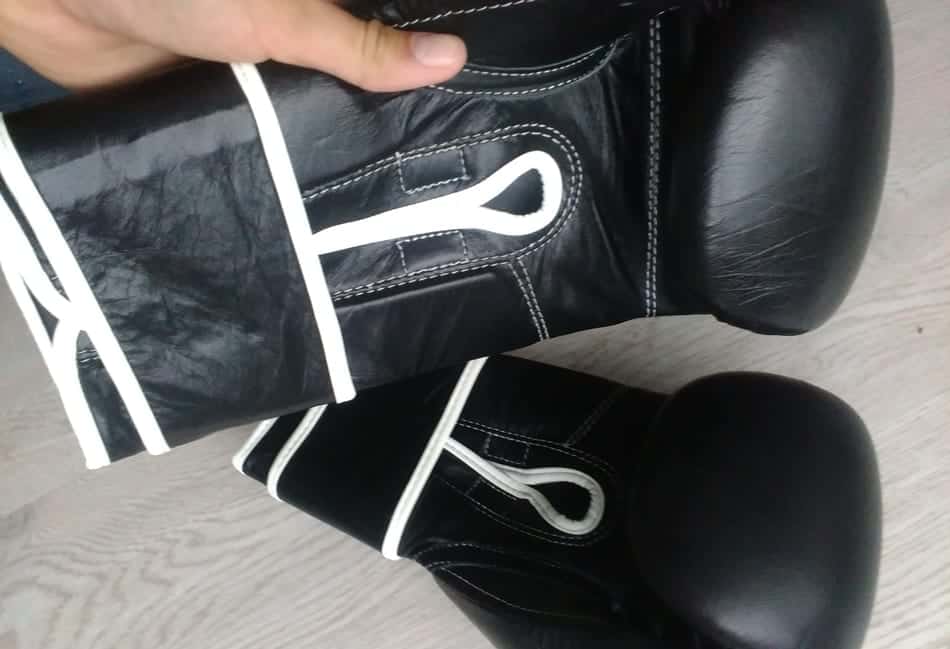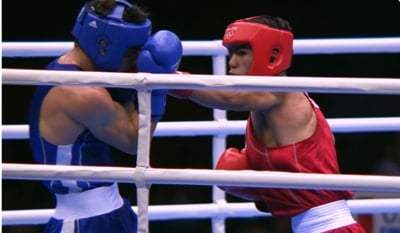
Since I started watching boxing, I always wondered what is the size of the gloves the professional boxers are wearing during their fights. So I did some research and I found out that some of them are using 8 oz and others 10 oz gloves. But what’s the difference between both sizes?
Compared to each other, the size difference between 8 oz and 10 oz gloves is minimal to the naked eye, although the 10 oz gloves have a significant amount more padding, this is to reduce the risk of injury to both fighters. Usually, the heavyweight and light heavyweight boxers use 10 oz gloves while the rest weigh classes use 8 oz. But sometimes the boxers are allowed to negotiate the size of the gloves.
Both size gloves have there pro’s and cons. For example, the defensive boxers prefer the 10 oz gloves because they’re bigger which helps the fighters block the punches better. While the 8 oz gloves are mainly used by knockout artists, who need to be able to punch hard, and by aggressive volume punchers who need lighter gloves because any additional weight can tire them out more quickly.
8 oz and 10 oz gloves compared to training gloves
Boxing is unique because it is one of few sports where the training is just as injury prone as actually competing. To help reduce the risk of injury’s such as boxers fractures and concussions, boxers will wear different size gloves for different types of training.
8 oz and 10 oz gloves have been used by boxers in bouts since the sport began. They are called competition gloves by competitors and promoters because of how much they differ from sparring and training gloves that are commonly used down the boxing gym.
They are typically two, to three times the price of generic sparring and training gloves and can only be used once in a licensed boxing competition due to the padding compression upon impact. The host of the boxing event is also expected to provide the gloves to reduce the chance of tampering and to keep the event in accordance with the boxing commission.
Sparring gloves– typically when sparring a boxer will use 16 oz gloves. These gloves are very heavy in comparison to an 8, or 10 oz glove and will generally slow a punch down noticeably, these gloves also have a huge amount of padding to prevent hand damage, and also to avoid seriously hurting the sparring partner.
16 oz gloves are also great for conditioning as they will usually be nearly double the weight of fight gloves so training with these encourages the development of power and also helps develop the shoulder muscles and slow down fatigue. This will be beneficial in competitions.
Bag Gloves – bag gloves are, as the name suggests, used for hitting a heavy bag but they are also used when punching mitts during training. The same gloves used for punching bags and general training are never used for sparring, or competitions as the repetitive contact
Typically, bag gloves are 12 oz or 14 oz but some heavier fighters will prefer using 16 oz gloves. Bag gloves vary in price but the best quality ones are made by
Competition Gloves – As stated before, competition gloves are between 8 and 10oz but this can vary dependant on state regulations and the weight of a fighter. For example, a 120lb boxer with a 6inch wrist size would typically wear 8 oz gloves, but a 140lb fighter with a 7inch wrist would wear 10 oz gloves.
Depending on the event, some fighters get a say on which gloves they would prefer. It is rare now for anything less than 10oz gloves to be used, for reasons we will outline later in the article. Competition gloves are never used form heavy bag training or sparring, this is because the padding is not significant enough.
Are you ready to get your boxing to the next level?
Watch a FREE Online Boxing Course by the boxing coach Brandon Ray!
You’ll learn:
1. How to fight bigger/taller opponents
2. How to close the distance without getting hit
3. Defense and Offense in the pocket
8oz Gloves or 10oz Gloves?
Despite the small weight and size difference, there is actually a big difference between the two gloves.
A larger fighter will be able to hit with considerably more power using smaller 8 oz gloves because there is less resistance slowing the punch down. This makes a big amount of difference in a competition setting because reactions need to be lighting fast and also because fights go on for a much longer duration and in most cases are more intense than sparring so small weight differences over the course of a fight can have an impact.
However, unlike 16oz sparring gloves you will have used during training, 8oz and 10oz boxing gloves will not have anywhere near the same amount of protective padding as the other two glove types. This is why trainers wrap the fighters hands before a bout. Hands are wrapped tighter than they would be during training and foam is usually used to cushion the knuckle. The wrapping and gloves need to be checked by an independent, licenced boxing authority to look for any signs to tampering.
When should boxers use 8oz or 10oz?
The main factor that comes into play when deciding to use 8 or 10oz gloves is wrist size and weight.
With larger wrists, generally come larger hands and larger hands are going to require a lot more padding than smaller ones.
Weight also plays a factor. The general competition rules is for light heavyweight, and heavy weight fighters to use 10oz gloves and for any weight less, 8 oz gloves can be used but there have been recorded instances when gloves up to 20oz have been utilized.
What gloves size the famous boxers are using?
Many world class boxers have very strong opinions on what size competition glove is better. It is widely reported that Floyd Mayweather prefers to fight with 10oz gloves and glove sizing is often a big factor in his negotiations.
One famous example of gloves playing a big factor in Mayweather career is Mayweather vs Paquiao. It is thought that if Manny Paquiao had the smaller, lighter more powerful 8 oz gloves that he wanted, then he may have won the bout.
Another example is Mayweather vs Hatton. Boxing fans are split over whether the 10 oz glove sizing had an impact on the fight. This is because Ricky Hatton was used to fighting in 8 oz gloves but upon fighting Mayweather he had to fight in 10 oz gloves. Ricky Hatton’s swarming boxing style meant that heavier 10 oz boxing gloves that he was not accustomed to would have had a big impact on his boxing.
This is because the 8 oz gloves are generally preferred by the faster heavy punchers, due to their smaller size and less padding. This means that in a fight they will find it easier to slip a punch underneath a guard, and it allows for a punch to have better contact. The reduced weight will also stop an aggressive fighter from tiring out and will put much more pressure on a defensive fighter.
Fighters that rely on their defense such as Mayweather prefer 10oz gloves. This is because they are slightly bigger and therefore make it harder for an opponent to connect there punches and break through there defense.
Larger gloves are also a massive asset when fighting a more aggressive opponent because the weight eventually tires the fighter out and will allow the more defensive fighter to become the aggressor during the later rounds, which will gain them points and help them secure the knockout.
Sonny Liston and Primo Carnera all used 8oz gloves at the peak of their careers as this was the standard that was used by the boxing commission at the time. The rules on glove sizing changed around this time period as many fighters were getting life threatening injury’s as a result of prolonged brain trauma.




Great research👍